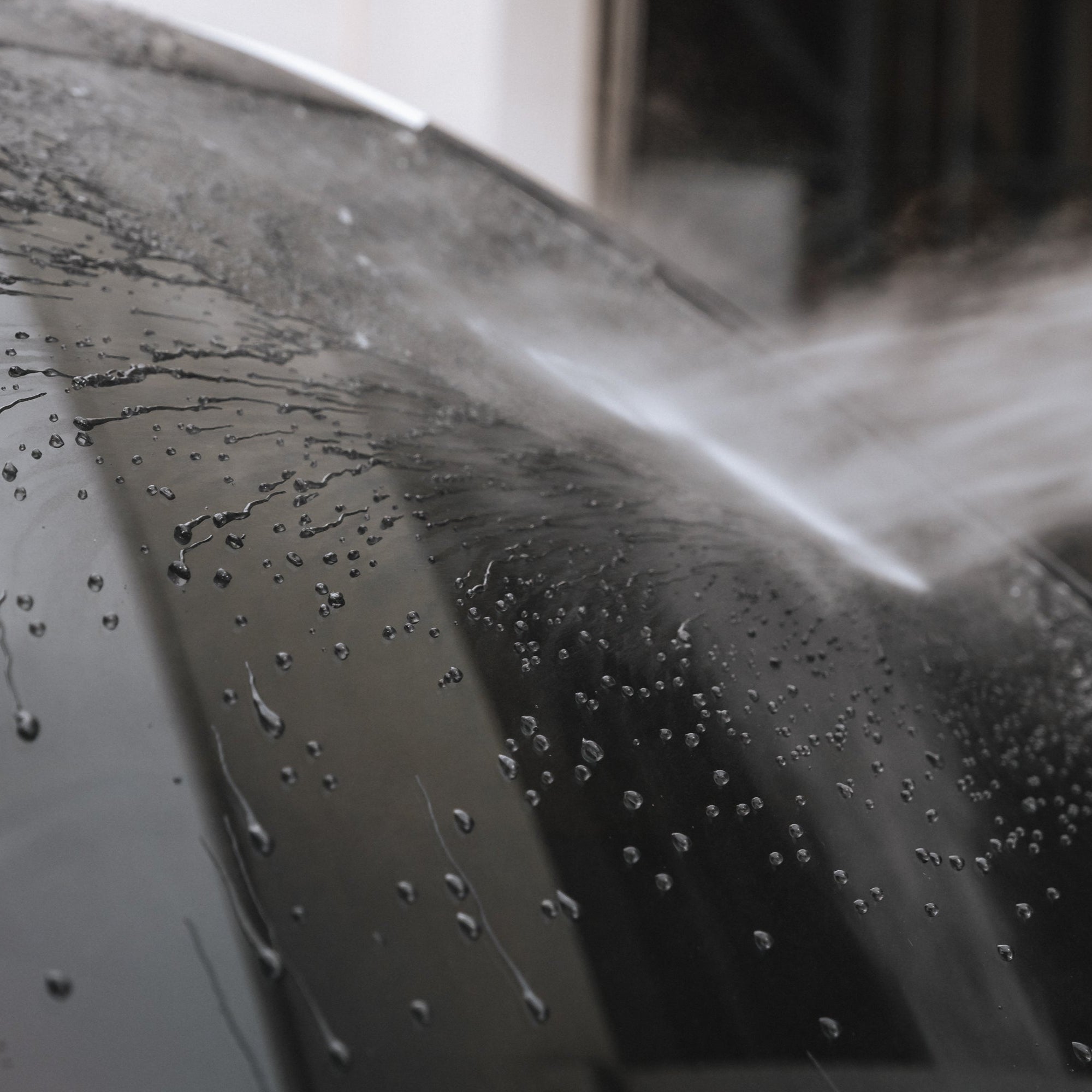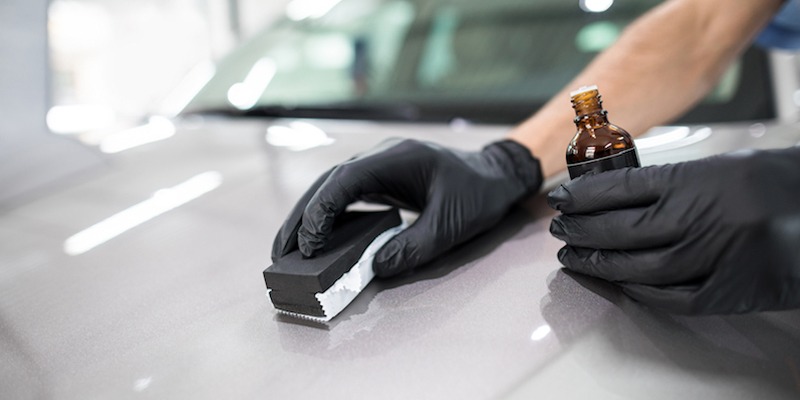Ceramic Coating vs. Sealants: Recognizing the Differences for Your Car
Ceramic Coating vs. Sealants: Recognizing the Differences for Your Car
Blog Article
The Value of Ceramic Coating: Protecting Your Car's Outside With Precision
In an age where keeping the aesthetic and useful honesty of your lorry is paramount, ceramic finish emerges as a critical service. With its unique bonding homes, ceramic covering supplies a degree of protection that much surpasses standard waxing approaches.
Advantages of Ceramic Coating
When it comes to preserving a car's aesthetic allure, ceramic covering offers significant benefits. This advanced protective layer provides a sturdy shield versus environmental pollutants, including dirt, gunk, and dangerous UV rays. By forming a semi-permanent bond with the lorry's paint, ceramic coatings successfully prevent oxidation and fading, ensuring that the vehicle preserves a shiny, showroom-like surface for an extended period. This not just enhances the lorry's aesthetic appeal but additionally adds to its long-term worth.
In addition to its protective top qualities, ceramic coating offers exceptional hydrophobic residential properties, creating water and various other liquids to grain off effortlessly. This feature simplifies the cleaning procedure, as dirt and debris are much less most likely to stick to the surface, lowering the regularity and initiative needed for maintenance. Furthermore, the coating's resistance to chemical stains from acidic contaminants like bird droppings and tree sap is one more noteworthy advantage, decreasing possible paint damage.
Ceramic coverings also enhance scratch resistance, giving a layer that can soak up small abrasions and swirl marks. This quality is particularly useful in maintaining an excellent surface, reducing the likelihood of visible flaws and protecting the stability of the vehicle's paintwork over time.

Just How Ceramic Layer Works
Understanding the mechanics behind ceramic finishing reveals its efficiency as a protective remedy for vehicles. Ceramic finishings are basically fluid polymer applications that chemically bond with an automobile's manufacturing facility paint, producing a safety layer. This layer functions as a barrier versus ecological contaminants such as dirt, grime, and ultraviolet rays, which can deteriorate a vehicle's outside over time. The vital component in ceramic layer is silicon dioxide (SiO2), which stems from quartz crystals and is understood for its extraordinary hardness and toughness.
Application of ceramic finishing includes a meticulous process. Originally, the vehicle's surface must be completely cleaned up and decontaminated to make certain optimal attachment. As soon as used, the liquid polymer creates a semi-permanent bond with the paint, setting into a clear, long lasting shield. This shield enhances the vehicle's gloss and hydrophobic homes, promoting less complicated cleaning by causing water and contaminants to grain and slide off easily.
Additionally, the finish's molecular framework gives resistance to small scrapes and chemical discolorations. Unlike waxes or sealants that sit on top of the paint, ceramic finishes integrate with the surface, supplying lasting security. This integration is fundamental to its effectiveness, ensuring the automobile's surface remains immaculate for years.
Comparing Ceramic Coating to Alternatives
In the world of automotive security, ceramic finishing stands as an awesome option when contrasted to conventional options such as sealers and waxes. While waxes use a short-term shiny finish, usually lasting look at this now just a few weeks to months, ceramic coatings give a longer-lasting option, commonly sustaining for several years. This longevity is credited to the chemical bonding that occurs when ceramic coverings are applied, forming a solid layer that is immune to ecological threats.
Contrastingly, sealers, although more resistant than waxes, still drop brief of the durable protection offered by ceramic layers. Sealers can typically last for approximately a year, supplying an artificial guard versus particular elements. They lack the premium hydrophobic buildings and UV security that ceramic finishes supply.
Moreover, ceramic coverings supply improved scratch resistance, which neither waxes neither sealers can effectively match. In recap, while traditional waxes and sealants use fundamental protection, ceramic coatings provide an extensive, lasting service that substantially preserves the vehicle and improves's outside coating.
Application Refine Described
Using ceramic finishing to a vehicle requires a careful procedure to make certain ideal outcomes and sturdiness. The preliminary step entails completely cleansing the vehicle's surface area to get rid of dust, oil, and previous waxes. This is essential for ensuring the finish sticks correctly. A pH-neutral hair shampoo and a clay bar therapy are often made use of to accomplish a beautiful surface area. When cleaned, the automobile is dried and polished to remove any kind of flaws, as any kind of existing scrapes or swirls can come to be a lot more pronounced after the layer is used.
Complying with surface area prep work, the application of the ceramic covering begins. The finish is commonly applied in a climate-controlled atmosphere to stop dirt bits from clearing up on the fresh cleansed surface. Making use of an applicator pad, the ceramic finishing is applied in tiny sections to ensure also protection. It is necessary to follow the supplier's standards concerning the suitable healing time and application thickness.
After application, the coating requires a particular healing period, during which the car should be secured from water and impurities. This healing process can differ depending on the product yet generally ranges from 24 to 48 hours. Inevitably, this in-depth procedure is critical in achieving a shiny and resistant finish.
Upkeep Tips for Durability
To preserve the durability of a ceramic covering, adherence to a regimented maintenance regimen is necessary. Routine cleaning is critical; utilize a pH-neutral automobile hair shampoo and soft microfiber gloves to Full Report avoid abrasions. Stay clear of automated vehicle washes, try this out as their severe brushes can endanger the finishing's stability. Instead, choose a hand wash to ensure comprehensive yet gentle cleansing.
Post-wash, drying the car with a tidy microfiber towel avoids water spots that may weaken the finishing with time. Additionally, apply a ceramic coating booster every few months. These boosters reinforce the hydrophobic residential or commercial properties and enhance the finish's protective capabilities, guaranteeing it stays reliable versus pollutants.
Bear in mind that auto parking places play a crucial function in upkeep. ceramic coating. Whenever feasible, park in shaded areas to minimize UV exposure, which can progressively deteriorate the covering. For long-lasting storage, think about making use of a car cover for added defense against environmental components
Conclusion
In verdict, ceramic covering serves as a critical protective layer for lorry exteriors, supplying resilient protection versus ecological factors such as dust, uv, and grime rays. Comprehending the application procedure and sticking to maintenance referrals are essential for making best use of the durability and efficiency of ceramic coating.
When it comes to preserving an automobile's visual allure, ceramic finish offers significant benefits. By forming a semi-permanent bond with the vehicle's paint, ceramic layers properly stop oxidation and fading, making certain that the automobile keeps a glossy, showroom-like coating for a prolonged duration. Ceramic layers are essentially fluid polymer applications that chemically bond with a cars and truck's factory paint, developing a safety layer. In recap, while standard waxes and sealers offer standard defense, ceramic finishings provide a detailed, long-term service that significantly boosts and preserves the automobile's outside coating.

Report this page